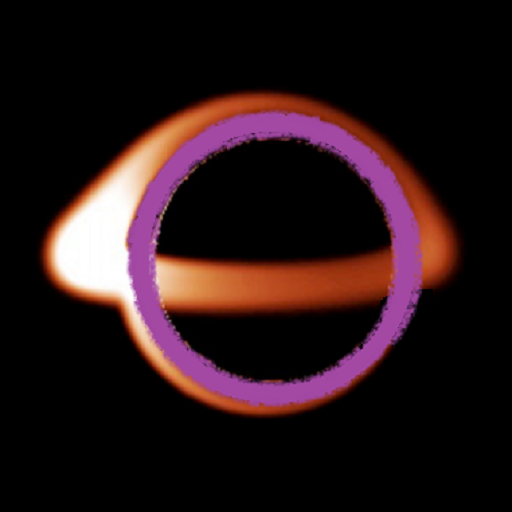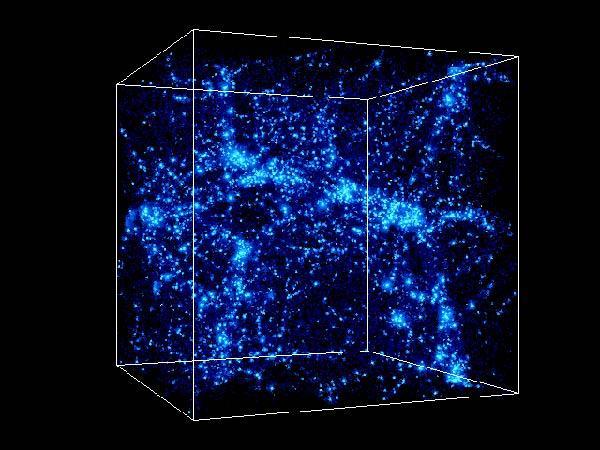Dark matter is excess mass that we can observe by its gravitational affect in our universe. What is it made of? This is still a mystery. Dark matter does not interact with light, so we can’t ever hope to see it. But we can observe how it affects its surroundings. We have observed dark matter’s gravitational influence in galaxy collisions, where it separates from regular matter. (http://home.slac.stanford.edu/pressreleases/2006/20060821.htm) It has been observed in fingers of galaxy clusters. (newscientist.com/article/dn13362-giant-ropes-of-dark-matter-found-in-new-sky-survey.html#.UdDhw9huteQ; nature.com/news/dark-matter-s-tendrils-revealed-1.10951) Observations have shown how dark matter forms a web throughout galaxies and galaxy clusters, allowing us to map the universe. (news.sciencemag.org/sciencenow/2010/07/a-new-way-to-map-the-universe.html)
This is our age of discovery for the universe. Not only are we discovering what dark matter is and how it forms, we are finding new ways to show how the universe begins. With dark matter, we how it affects its surroundings. When we see how phenomena affect our surroundings, we start to see the entire universe is a new light. There is a greater structure of energies that allow the formation of the singularity that forms our inflationary Big Bang. The new proposal in my upcoming book, Grand Slam Theory of the Omniverse, will show how we can see the effects of the larger structure to explain phenomena inside our universe, like dark energy, the unknown agent that accelerates expansion of space, or dark matter, the mysterious mass in space. Go to fb.com/grandslamtheory to get updates to our universe. You can download the white paper at grandslamtheory.com and start experiencing how the Omniverse works.
How did dark matter become an integral part of the webbing throughout the universe? To answer this, we need to look back to the very beginning of the universe. Back to a time when it is a tiny singularity, only a Plank length in distance across (10-35 m). That’s 0. followed by 34 zeroes and a one. This singularity at the smallest measurable distance literally unfolded space at the beginning of the Big Bang. This is known as inflation, which is a well accepted modern add-on to the original Big Bang (Alan Guth, The Inflationary Universe). This happened in a fraction of time – a trillionth of a second. Space unfolded to almost its current size faster than light. How can this be possible? Using string theories to describe the process in great detail, it was found that the early universe was similar to bubbles in boiling water. When water vapor occurs under the surface, bubbles appear. They described bubbles of space forming in a similar fashion. Then the bubble conglomerate to form larger bubbles and an entire universe filled with a froth of bubbles coming together.
Within the space of the bubbles, the building blocks for matter formed in clouds of primordial soup. (livescience.com/22320-quark-gluon-plasma-big-bang-conditions.html) Construction of matter is well documented in the Theory of the Big Bang. But something else must be occurring that we don’t know about yet to make dark matter. Imagine looking at the froth of bubbles. Picture the pattern that would be left behind by bubbles popping, leaving slight residue. If you watched all of the bubbles of a froth that dried, you could look at the pattern of residue left behind, and it would look a lot like the dark matter map of the universe. So we could look at how dark matter vs. matter form on a subatomic level by first understanding where they form in the inflationary Big Bang.
Dark matter is a consequence of the formation of space itself. As early space inflated via bubbles, creating the universe, primordial matter formed in the space of the bubbles, and dark matter was formed along the surfaces of the bubbles. This is why the network of dark matter throughout the universe resembles the froth of the bubbles of space. Matter and dark matter ultimately became entwined together by gravitational attraction to create galaxies. In fact, without dark matter, galaxies as we know them might not even be possible. Currently, tests are underway to determine what dark matter is composed of. (http://home.web.cern.ch/about/experiments/ams; usatoday.com/story/tech/2013/04/03/scientists-find-hint-of-dark-matter-from-cosmos/2049393) We can also look at the nature of how it forms within the froth of inflationary spatial expansion of our singularity, known as the universe. Welcome to your universe – feel free to move around.
Thank you!
Image credit: NewScentist (newscientist.com/article/dn13362-giant-ropes-of-dark-matter-found-in-new-sky-survey.html#.UdDiAdhuteQ)


The multiverse theory of space, or why we don’t need dark energy and dark matter. – http://youtu.be/t80qywmnADM
Thank you! I should add that the Grand Slam Theory incorporates multiverse theories, which are well accepted today. It also adds another level to allow for multiple multiverses.